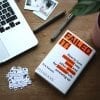Forex trading is the foreign exchange of currency between countries. Individuals and businesses trade foreign currency for tourism, trade, and business. The ultimate goal, as is the case in any trade, is to make a profit. Because foreign currencies are volatile, they provide ample room for profits while providing just as much risk.
Check out our beginner’s guide on Forex trading below.
TL;DR If you’re just here to find out which forex trading platform we recommend for beginners, it’s eToro as it lets you follow and copy experienced traders.
History of Forex trading
Trading currencies and goods as been around for centuries, but Forex trading as we know it today only started in the early 1970s. Towards the end of World War II, United States, Canada, Australia, Japan and some European countries set up rules for financial management and relationships. These rules were part of the Bretton Woods system.
The system collapsed in 1971 when the United States terminated the convertibility of the US Dollar to gold. Multiple currencies like the US Dollar and British Pound became free-floating, which effectively created Forex trading as we know it today. Although the Bretton Woods system collapsed, it did create two institutions that still have a major influence on the FX market today: the World Bank and the IMF.
Understanding Forex trading
Forex trading, or FX trading, is a group of buyers and sellers trading currencies directly. There isn’t a market – the trades take place OTC or over-the-counter. Traders conduct transactions on computer networks 24 hours a day because the major forex markets are all in different time zones.
The major markets include:
- New York
- Zurich
- London
- Tokyo
- Hong Kong
- London
- Singapore
- Sydney
- Paris
The price of foreign currencies change quickly and are quite volatile throughout the day, which is part of what makes them so lucrative for investors. You can actively trade them (day trades) or hold positions that predict the future value.
The spot market
The spot market is the most common forex market. This is the ‘actual’ exchange of the currency between the pair (two currencies). The trade takes place instantly but actually settles in two days. It’s not based on a future price; it’s based on today’s values.
The market determines the current price based on supply and demand. The demand varies based on a variety of factors, such as the economic and political climate of the country, interest rates, and any ‘assumptions’ throughout the world about the country and currency.
The forward Forex market
Unlike the spot market, the forward market is an agreement to buy or sell currency in the future. The forex contract is for a specific price and for trade on a specific date. You don’t trade actual currencies with the forward forex market; you trade contracts that give you a claim to the specified amount of currency at a future date.
TIP! Follow this Forex trading A-Z course for beginners and experienced traders. You’ll learn how to take advantage of currency movements and get a thorough understanding of bulls & bears, short selling and much more.
Future Forex market
A futures contract is a legally binding contract between the buyer and seller. Like the forward market, you agree on a price for the trade and exchange contracts. The contract includes the number of units, the settlement date, and the price increments.
Forwards and futures contracts help hedge against large variations in currency exchanges in the future. The contracts can be bought and sold before the expiration date.
Forex pairs
Forex is always listed in pairs – the base currency and the quote currency. You sell your currency, (e.g. USD) to buy a foreign currency, which is the quote currency. The quote is the cost of one unit of the foreign currency in the base currency dollars.
For example, if you’re trading USD for Swiss franc, it would be CHF/USD. If it was trading at 1.03, this means one franc is equal to 1.03 US dollars. If the franc’s price increases, the price of the pair goes up. If the franc’s price decreases, the price of the pair goes down.
Pip
A pip is the base unit in a currency price and usually the last decimal of a quoted price. It’s used to express the change in value between two currencies. For example, if the US Dollar (USD) against the British Pound (GBP) moves from 0.7800 to 0.7801, that .0001 change in value is 1 pip.
Most currencies use 4 decimals but there are a few exceptions like the Japanese Yen (JPY), which is using two decimals.
Bid & Ask Price
When you trade forex, you’ll always see a bid price and an ask price:
- Bid price: this is the price at which you can sell the currency
- Ask price: this is the price at which you can buy the currency
A transaction of trade will take place when the buyer and the seller agree on a price. The difference between the bid and ask prices are called a spread. A smaller spread means better liquidity.
Spread
In forex trading, the spread means the difference between the sale (bid) price and the buy (ask) price of a currency pair. The spread tends to be very low for the most popular currency pairs, for example, the US Dollar and the Euro. Typically it’s 1 pip or even less. Other, less popular currency pairs, have much higher spreads. Bear in mind that the value of the currency must exceed the spread before it becomes profitable.
Margin
If you trade, you have to put in some money to open and maintain a new position. You have to retain this money in your trading account. The amount of money you retain in your account when opening a trade is called margin.
Margin is a part of your funds that your broker retains in order to keep your trade open so you could cover a potential loss of the trade. Let’s say you want to buy $10,000 worth of USD/EUR. You don’t need to put in the full $10,000 but only a fraction of that, something like $300. This amount depends on who your broker or CFD provider is. More on that later on.
Leverage
This is one of the reasons why forex trading is so popular as you get much higher leverage with forex than with other financial instruments like stocks. Leverage is the amount of capital provided by a broker to increase the volume of trades. It’s the ratio of your funds to the size of the broker’s credit, meaning it’s borrowed money to increase potential returns. The size of leverage varies and depends on trading conditions.
An example:
- The value of a contract is 10,000 units of the base currency, so for USD/EUR that would be $10,000.
- Let’s say the leverage ratio for your broker is 1:10 and you have $100 in your account. This would allow you to trade a currency pair with a $1,000 position size.
- If your trade is successful, your profits are maximized by 10 through leverage, but your losses could also be multiplied by 10.
Hence, it’s vital to understand how leverage works as it should be used with caution. The most popular leverage in forex is 1:100, meaning for every $100 you invest you will have $10,000 available for trading.
Long trade
A long trade means you expect the value of that currency to increase over time. Your profit would be the difference between the price you bought the currency at, and the price you sell it for later on.
Short trade
A short trade is a little more complex to understand. In this case, you sell the currency as you expect its value will go down over time and you can then buy it back again at a lower price. You could benefit later on by buying the currency back at a lower price.
Liquidity
The liquidity of the currency is a key factor in moving the currency value up or down. Liquidity simply means how active a trading market is, like how many traders are in the market and what’s the total volume being traded.
Liquidity in forex markets tends to be greater than on the stock market, as forex can be traded 24 hours a day. Volumes fluctuate during the day as financial markets around the world open and close. The most liquid currency pairs are the ones with the highest supply and demand. The most liquid currency pairs are:
- EUR/USD: Euro v US Dollar
- USD/JPY: US Dollar v Japanese Yen
- GBP/USD: British Pound v US Dollar
- AUD/USD: Australian Dollar v US Dollar
- USD/CAD: US Dollar v Canadian Dollar
- USD/CHF: US Dollar v Swiss Franc
Unsurprisingly, all those currency pairs include the US Dollar. On average, more than $5 trillion is being traded on the forex markets every day.
The benefits of trading Forex
It sounds risky, but so are all other investments. While forex isn’t recommended for beginning traders, there are plenty of benefits experienced traders may experience including:
- Liquidity – The forex market is one of the largest trading markets which makes it easy to exit out of should you need the cash. In non-liquid markets, it’s hard to find a buyer, even if you’re willing to take a loss to liquidate your investment.
- Around-the-clock-trading – Because trading works around the world, there are always trades to be made no matter the hour.
The risks of Forex trading
As with any investment, there are downsides you should consider:
- Leverage – Having leverage can be exciting and risky at the same time. Try not getting caught up in the emotions of a potential ‘huge win,’ leveraging too much and putting your entire portfolio at risk.
- Education – Trading foreign currencies has a major learning curve that you must understand before attempting the trades. This includes how the market works as well as the economics of it all in order to predict what currency values will do.
Getting started with Forex trading isn’t hard. It’s not regulated like the stock market, so you can start with as much or as little as you want in your account. Try keeping your forex trades for a single currency to 1% of your account balance when you start. It’s vital that you build your experience and education about forex before trading since it works so differently from the stock market. Decide, do you want to actively trade (day trade) or hold long or short positions and predict the changes?
Forex trading can be a lucrative way to diversify your portfolio if you have the right knowledge and experience to make it happen.
How forex trading works
You can trade forex two ways – CFDs and through a broker.
CFDs
CFDs (contract for difference) are leveraged forex trades. You don’t actually trade the commodity. Instead, you trade contracts that leverage what the currency will do. In other words, you exchange the difference between the currency’s current price (when you buy it) and the closing price (when you sell it). You can buy long or short positions. A long position assumes the price will increase and a short position assumes the price will decrease. If the opposite happens, you realize a loss.
Broker
You may also trade using a broker. You assume the same positions but operate on margins. The margins tend to get very high, which puts you at risk of great loss, but also puts you in a position for great profits, if the investment works out.
Once you choose your method, you’ll need to create a strategy. Try creating the strategy long before you make your first trade. This helps eliminate the emotional component that can occur when trading forex, causing you to make rash decisions. Do your research and find a strategy that takes into consideration your risk tolerance and desired outcome.
How to choose the right broker
It’s important to choose the right broker when you start trading forex as choosing the wrong would could cost you a lot of money.
Check if the broker is registered
All forex brokers in the United States must be registered with the National Futures Association (NFA), so the first thing to do is check if your preferred broker is registered on the NFA website.
Negative balance protection
If a forex broker doesn’t offer negative balance protection you could lose more money than you have in your account when a position crashes.
Trust & well-known institutions
You shouldn’t trade with smaller forex brokers. There’s always a risk that some unexpected things happen, like for instance the collapse of the Swiss Franc in 2015. This could result in loads of traders having their accounts wiped out, or even worse, go negative as per above. If this happens, you better be with a broker that is a well-known financial institution or a broker that’s part of a large bank as the risk of that institution closing down is obviously a lot smaller than with a smaller broker.
Fees & procedures
Look at the fees a broker charges. Not just trading fees, but also funding, withdrawal and potential account closure fees. Also check the procedures for opening/closing accounts and funding/withdrawing money, as for some brokers those procedures can be very long.
Customer support
As you’re a beginner, you probably have loads of questions. So pick a broker that offers 24 hours support and check if the broker’s response times are acceptable.
TIP! If you’re a beginner in Forex, sign up to eToro. They offer an easy-to-use copy-trading platform where traders can copy the trades of pro investors across over 1,900 instruments. It has often been voted as the best Forex platform for beginners and has over 10 million users worldwide. Capital at risk.
Forex trading strategies for beginners
Here are a few fairly easy-to-understand trading strategies you can start with as a forex beginner.
Moving average cross strategy
This strategy looks at data over a long period of time, it’s using the simple moving average (SMA). In this case you calculate and recalculate the mean value over a number of recent data points.
Formula : SMA = (Sum of price values for n periods) / n
Example: if the values over the last 5 days have been: 20 + 25 + 23 + 22 + 20, then the SMA would be 22 (110 / 5).
You can calculate this over a short term and a much longer term. If you’re using the moving average cross strategy, you’ll look at when the short term average line moves above or below the longer term line. If the short term line goes above the longer term line, it suggests an upward trend and therefore a buy signal. If the short term line moves below the long term line, it suggests a decline in value and therefore a sell signal.
Breakout strategy
In this strategy, you’re using breaks as signals. Markets can move between certain bands for some time, also known as consolidation. Once a market is starting to move outside those consolidation bands then a breakout occurs. A breakout can cause a new trend but that’s not necessarily the case. Always use a stop loss when you’re a beginner and you’re adopting this trading strategy as it will prevent losses.
You can combine the moving average cross strategy with the breakout strategy. For example, you could use the moving average cross trends to make the breakout finals more efficient by ignoring breakout signals that don’t match the moving average cross lines.
Donchian channels strategy
This trading strategy was invented by Richard Donchian, a leader in futures management, and is using the highest high value and the lowest low value over a set period. There are two lines:
- The upper line is the highest price for the period you set, e.g. 30 days or 300 days
- The lower line is the lowest price for the period you set
You can also combine moving averages with the Donchian channels strategy. For example, sell if the 30-day moving average is less than the 300-day moving average. Of buy, if the 30-day moving average is greater then the 300-day moving average.
TIP! Bob James is a vastly experienced Forex trader. You can follow his detailed analysis and trades through 1000pip Builder. Receive the best Forex signals for trading. Bob has excellent results and great customer reviews.





